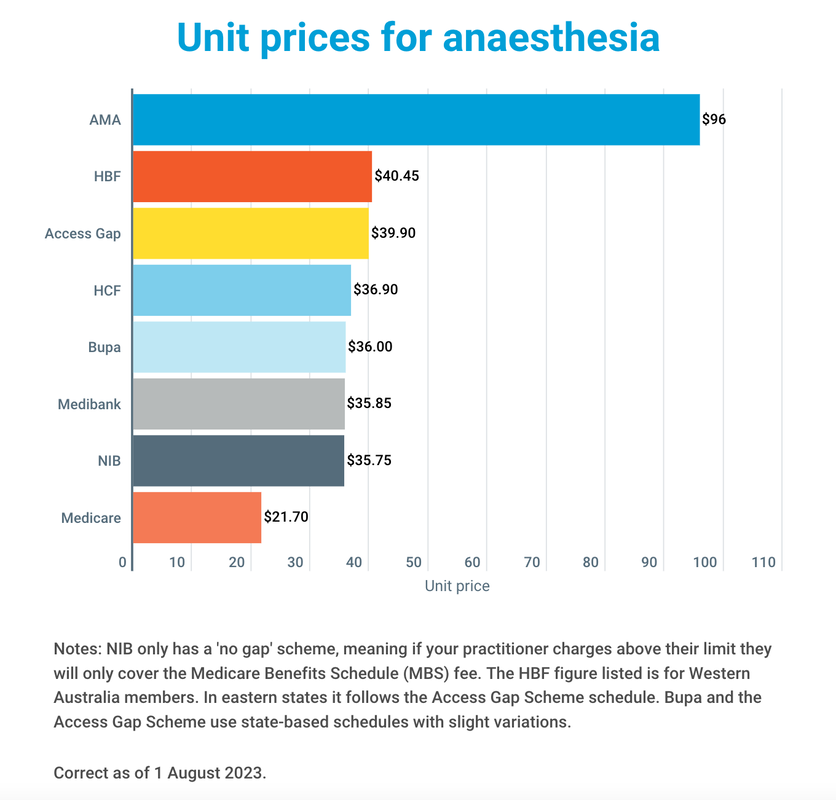FEES
The Australian Medical Association (AMA) publishes a range of suggested fees for services. The fees I charge are within the set AMA rates and are calculated in relation to case complexity and procedure duration. The fees will increase after hours, during emergency situations and for call backs from home. There is usually a gap (out of pocket expense) between the health fund rebate and the total fee for each procedure.
An accurate estimate will be provided by telephone 1-2 days prior to surgery. This estimate will be provided by staff from Medicnet. If you require an earlier estimate please use the link provided below.
Why Is There a Gap Charge?
A gap refers to an out-of-pocket expense for medical services. A patient will have a gap if the rebates from Medicare and/or the health fund do not cover the cost of the doctors fees.
Health funds often produce statistics stating that 70-90% of anaesthetists will not charge a gap with their fund. While this may be true, this does not take into account geography. NSW has a higher percentage of anaesthetists who charge gaps, and this percentage & amount increases in larger cities ie Sydney.
Unfortunately gaps have become larger and more widespread over the past few years as medicare and private health insurance rebates to doctors have failed to keep up in line with inflation. It is understandable to be annoyed or frustrated when receiving a gap charge after paying high premiums for health insurance. The basis of the gap charge will be explained below.
Anaesthesia fees are billed on a "unit" basis. The number of units charged for a surgery depends on its complexity, including:
- type of surgery
- duration of surgery
- monitoring devices
- anaesthetic procedures
- patients illness severity
- patients age <12 or >70
- after hours emergency
For example, the preoperative consultation (Item Number 17610) is 2 units, arthroscopic shoulder surgery (21622) is 5 units, time units for the duration of surgery eg. 2 hrs = 10 units, nerve block (22050) is 2 units. Therefore anaesthesia for this particular arthroscopic shoulder surgery is billed at 2+5+10+2 = 19 units.
If an anaesthetist bills a "no gap", they would receive approximately $33 per unit. For 19 units in the example above the charge would be 19 x $33 = $627. This amount of $33 per unit has been set by the government and has not increased in line with inflation for many years.
The AMA (Australian Medical Association) recommends billing at $100 per unit. In the example above, the charge would be 19 x $100 = $1900 (vs 19 x $33 = $627). This amount of $100 per unit has kept up with inflation. As you may appreciate, the AMA rate is 3 times larger than the no gap rate.
The difference between the AMA charge of $1824, and the medicare/health fund rebate of $627 is $1197. This amount of $1273 is the "gap" charge. Some anaesthetists choose to bill at AMA rates, however, my rates are in between the AMA's recommendation and the government set rate ie. usually lower than the AMA rate.
Please see the diagram below for a visual explanation (NB $96 for AMA was the 2022/2023 unit rate)

